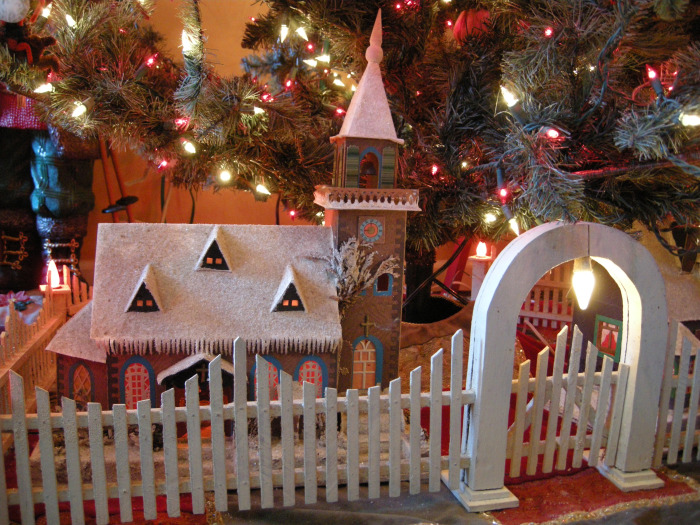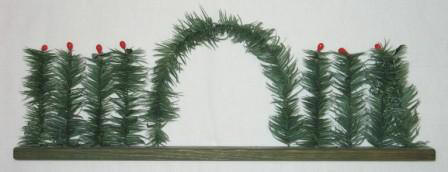VILLAGE HOUSES
Most of us get a warm, fuzzy feeling when we think of Christmas and automatically reflect upon our childhood memories–Christmas trees bedazzled with lights and ornaments, wreaths, stockings hung by the chimney and all the wondrous decorations that would make any child’s heart flutter with anticipation.
Children would gravitate to the village under the tree with its little cardboard houses carefully placed atop the cotton-batting snow. The village was populated with Barclay lead figures. The skaters were placed on a mirror to create the illusion of a frozen lake. Street lamps and cars were strategically placed, and when lit up, the whole scene would be brought magically to life.
From the late 1800s, Germans were masters of the glass Christmas ornaments and the American people couldn’t get enough of these sparkling treasures. WWI changed the way we did business with Germany. The Butler Brothers of Chicago and F.W. Woolworth were two well-known proprietors that created the concept of the local “dime store”. With Germany out of the picture, they set their sights on other manufacturers and Japan seemed like the perfect partner. The Japanese used their industrious ingenuity to create many of our much sought after Christmas collectibles. The 1920’s found many of our Christmas trees ablaze with the new inexpensive string lights. With our fondness for bright and sparkly items the Japanese found many ways to satisfy our appetite and the phrase “Made in Japan” became part of our vocabulary.
During 1927-28, the first Japanese houses were box-like candy containers; later versions had a hole in the back for filling with candy. A moveable cardboard disk held the candy inside. Soon after, they had the ingenious notion to put a light into the round opening in the back of the houses and use them to create an illuminated village under the tree. The variation and quantity that the Japanese produced in such a short time was amazing.
WWII all but put an end to the cardboard putz house. Germany and Japan were now our enemies. The American Dolly Toy Company and the Colmor Company started creating their own interpretations of the cardboard putz house. The “Made in USA” houses where never made with the same charm as the pre-war houses, but we still had a supply to use in our putz villages. After the war, the Japanese started to make cardboard houses for the American market again. There was a small spurt of the original charm in these houses up until the early 1950s. After that, they became smaller, flimsier, and a lot simpler. Somewhere around the middle 1960s the little paper house had all but vanished.
 Putz items, by true definition, were any figures or buildings that when displayed together, told the Biblical story of the birth of Christ. The term today is loosely used for any item that is used under a Christmas tree to create a Christmas “garden” or “yard.” Buildings, homemade or mass produced, composition figures and animals, bottle brush trees and any assortment of various accessories, possibly a toy train and usually a Nativity set at the heart of the display are just a few things that might spark one’s creativity when designing a “putz” for under the tree.
Putz items, by true definition, were any figures or buildings that when displayed together, told the Biblical story of the birth of Christ. The term today is loosely used for any item that is used under a Christmas tree to create a Christmas “garden” or “yard.” Buildings, homemade or mass produced, composition figures and animals, bottle brush trees and any assortment of various accessories, possibly a toy train and usually a Nativity set at the heart of the display are just a few things that might spark one’s creativity when designing a “putz” for under the tree.



